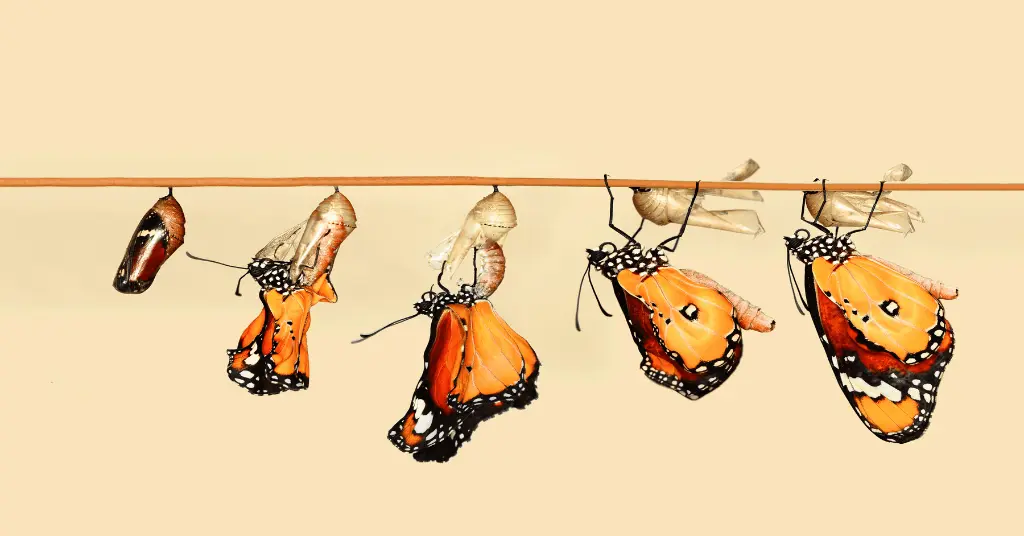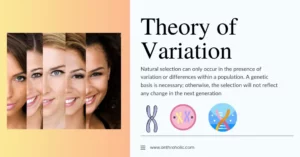AI Answer Evaluation Platform Live Now. Try Free Answer Evaluation Now
Macroevolution
Macroevolution refers to the long-term patterns and processes of evolution that occur over geological time scales, typically involving the formation of new species and the diversification of entire groups of organisms. This contrasts with microevolution, which refers to the changes that occur within populations over shorter periods of time. Understanding macroevolution is crucial for understanding the history and diversity of life on Earth, and it has significant implications for fields such as anthropology, biogeography, ecology, and conservation biology.

In this article, we will explore the evidence for macroevolution, including the fossil record, biogeography, and molecular biology. We will also examine the various mechanisms that drive macroevolution, such as natural selection, genetic drift, and gene flow, and we will provide examples of macroevolutionary changes in various groups of organisms. Finally, we will discuss some of the controversies and debates surrounding macroevolution, including creationism, evolutionary developmental biology, and the role of contingency and chance in the evolution of life.
Evidence
There are several lines of evidence that support the occurrence of macroevolution. One of the most compelling sources of evidence comes from the fossil record, which provides a rich history of life on Earth dating back billions of years. The discovery of transitional forms, such as Tiktaalik, which has features of both fish and tetrapods, provides strong evidence for the gradual evolution of species over time.
Another important source of evidence comes from biogeography, which studies the distribution of species across the globe. The geographic distribution of organisms provides clues about their evolutionary history and how they may have migrated or evolved in response to different environmental conditions.
Homologous structures and developmental biology provide additional evidence for macroevolution. Homologous structures, such as the forelimbs of mammals, share a common evolutionary origin and suggest that these organisms share a common ancestor. Developmental biology also supports the idea of macroevolution, as the developmental processes that generate different forms of life are conserved across diverse groups of organisms.
Finally, molecular biology and genetic evidence provide important insights into the relatedness of different species. Comparing DNA sequences and studying the genetic mechanisms that drive evolution can reveal the relationships between organisms and the processes that have led to their diversity over time. Together, these lines of evidence provide strong support for the occurrence of macroevolution and help us understand the history and diversity of life on Earth.
Mechanisms
There are several mechanisms that drive macroevolution, each of which contributes to the formation of new species and the diversification of life on Earth.
One of the most well-known mechanisms of macroevolution is natural selection, which refers to the process by which individuals with advantageous traits are more likely to survive and reproduce. Over time, these advantageous traits become more common in the population, leading to evolutionary change.
Another mechanism of macroevolution is genetic drift, which is the random fluctuation of allele frequencies in small populations. Genetic drift can lead to the loss of genetic variation within a population, which can contribute to the formation of new species over time. Founder effects, which occur when a small group of individuals establishes a new population in a new location, can also lead to genetic drift and the formation of new species.
Gene flow and hybridization are additional mechanisms that contribute to macroevolution. Gene flow occurs when individuals or populations migrate and interbreed, leading to the exchange of genetic material between different populations. Hybridization occurs when two different species interbreed and produce offspring, which can sometimes lead to the formation of new species.
Finally, the patterns of macroevolution can be shaped by different modes of evolution, such as punctuated equilibrium and gradualism. Punctuated equilibrium suggests that evolution occurs in rapid bursts of change, followed by long periods of stasis, while gradualism suggests that evolutionary change occurs more gradually over long periods of time.
Together, these mechanisms and modes of evolution contribute to the formation of new species and the diversification of life on Earth.
Examples
Macroevolution has led to numerous major evolutionary events throughout the history of life on Earth. Here are some examples of macroevolutionary changes:
- Evolution of mammals and their adaptations: Mammals evolved from a group of reptiles in the late Triassic period, around 225 million years ago. Over time, mammals diversified into numerous different lineages, each with unique adaptations for survival in different environments. For example, the evolution of hair allowed mammals to maintain a constant body temperature and live in colder environments. The development of specialised teeth and jaws allowed mammals to consume a wider variety of foods, and the evolution of specialised senses such as echolocation and keen vision allowed them to better navigate their environments.
- The origin of birds and flight: Birds evolved from small, feathered theropod dinosaurs around 150 million years ago. Over time, they developed adaptations such as hollow bones, keeled sternums, and powerful muscles that allowed them to fly. The evolution of feathers not only allowed for flight, but also played a role in regulating body temperature and communication. Today, birds are one of the most diverse and successful groups of animals on the planet, with over 10,000 species inhabiting a wide range of environments.
- The evolution of whales and their aquatic adaptations: Whales evolved from land-dwelling mammals that returned to the sea around 50 million years ago. Over time, they developed a number of adaptations for aquatic life, such as streamlined bodies, flippers for swimming, and blowholes for breathing. The evolution of echolocation allowed them to navigate and locate prey in their aquatic environment, while the loss of hind limbs and development of tail flukes allowed for efficient swimming. Today, there are over 80 species of whales and dolphins inhabiting the world’s oceans.
- The diversification of insects and their ecological roles: Insects are the most diverse group of animals on the planet, with over one million described species and likely many more yet to be discovered. Over time, insects have evolved a wide range of adaptations for life in nearly every habitat on Earth, from the desert to the rainforest. Insects play crucial ecological roles as pollinators, decomposers, and food sources for other animals. They have also coevolved with plants, leading to the development of complex mutualistic relationships such as pollination and seed dispersal.
In conclusion, these examples of macroevolutionary change demonstrate the incredible diversity and adaptability of life on Earth, as well as the powerful forces of natural selection and genetic variation that drive evolutionary change.
Controversies and debates
While macroevolution is widely accepted among the scientific community, there are still debates and controversies surrounding the topic.
One of the most well-known controversies involves creationism and intelligent design, which propose that life on Earth was created by a supernatural entity or that certain features of living organisms are too complex to have arisen through natural processes. These ideas are not supported by scientific evidence and are not considered to be valid scientific theories.
Another area of debate in macroevolution is evolutionary developmental biology (evo-devo), which explores the role of genes and developmental processes in evolution. Evo-devo challenges traditional evolutionary theory by suggesting that changes in the regulation of gene expression and developmental pathways can drive evolutionary change, rather than solely relying on natural selection acting on random mutations.
The role of contingency and chance in macroevolution is also an area of debate. While natural selection is a major mechanism driving macroevolution, chance events such as genetic drift and founder effects can also play a role in shaping evolutionary patterns. Additionally, some scientists argue that the specific events that led to the diversification of life on Earth were contingent on historical events, such as mass extinctions, rather than being predictable outcomes of natural selection alone.
Overall, while there are still debates and controversies in macroevolution, the evidence for the occurrence of macroevolution is robust and provides important insights into the history and diversity of life on Earth.
Conclusion
macroevolution refers to the long-term evolutionary changes that have led to the incredible diversity of life on Earth. The evidence for macroevolution comes from the fossil record, biogeography, homologous structures, and molecular biology. Mechanisms of macroevolution include natural selection, genetic drift, gene flow, and punctuated equilibrium. The controversies surrounding macroevolution include creationism and challenges from evolutionary developmental biology. Examples of macroevolutionary change include the evolution of mammals, birds, whales, and insects. Macroevolution is significant because it helps us understand the history and diversity of life on Earth, and informs our understanding of evolutionary processes.
References
- Darwin, C. (1859). On the Origin of Species by Means of Natural Selection, or the Preservation of Favoured Races in the Struggle for Life. London: John Murray.
- Eldredge, N. (1989). Macroevolutionary Dynamics: Species, Niches, and Adaptive Peaks. McGraw-Hill.
- Gould, S. J., & Eldredge, N. (1977). Punctuated equilibria: the tempo and mode of evolution reconsidered. Paleobiology, 3(2), 115-151.
- Jablonski, D. (2008). Species selection: theory and data. Annual Review of Ecology, Evolution, and Systematics, 39, 501-524.
- Mayr, E. (1982). The growth of biological thought: diversity, evolution, and inheritance. Belknap Press.
- Simpson, G. G. (1944). Tempo and mode in evolution. Columbia University Press.
- Stanley, S. M. (1979). Macroevolution: Pattern and Process. W.H. Freeman.
- Valentine, J. W., & Jablonski, D. (1993). Fossil communities: compositional variation at many time scales. Paleobiology, 19(2), 211-232.




